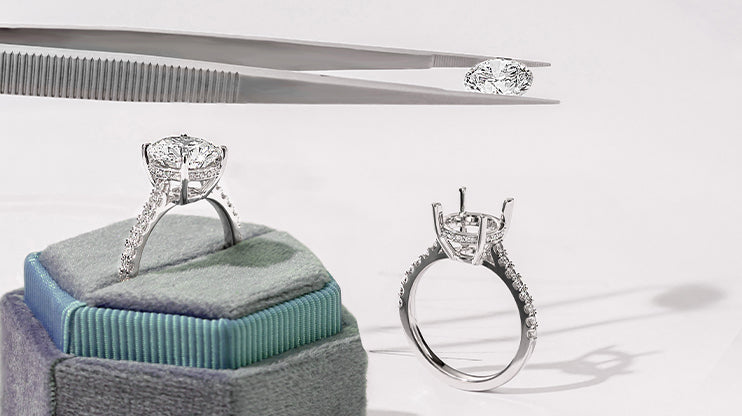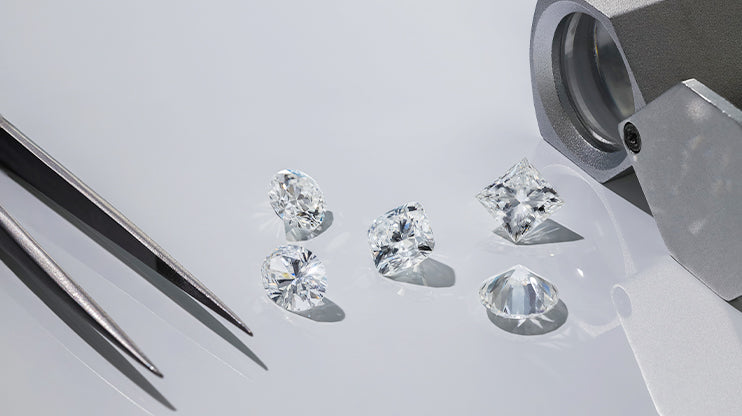How to Choose the Perfect Metal
Why Metal Matters?
Choosing the right metal for your jewelry is paramount for several reasons. Not only does the chosen metal contribute to the jewelry's aesthetic appeal, but it also influences its longevity and maintenance requirements. Certain metals, such as gold, is renowned for their timeless beauty and versatility, complementing various gemstones and designs. On the other hand, metals like platinum offer exceptional durability, making it a perfect choice for everyday wear. Furthermore, the choice of metal can significantly impact the price of the jewelry, allowing you to select a piece that aligns with your budget. Hence, choosing the right metal is an important consideration that ensures your jewelry reflects your style, stands the test of time, and remains within your budget range.
What is Gold?
Gold is a precious, naturally occurring metallic element that is highly valued for its beauty, malleability, and resistance to rust or tarnish. Its symbol on the periodic table is 'Au', derived from the Latin word 'Aurum,' which means 'shining dawn.' This lustrous metal has been used throughout history as a medium of exchange or currency, but it is also widely used in jewelry due to its attractive, warm hue and versatility.
Historically, gold has been associated with wealth, power, and prestige. Today, it continues to be used for investment purposes and in various industries such as electronics and dentistry due to its unique properties. Understanding gold and its properties helps when selecting gold jewelry or using gold in various applications.
Gold is measured in karats. A gold karat (abbreviated as 'K') is a unit of measurement used to evaluate the purity of gold. One karat represents 1/24th of the whole. Therefore, 24-karat gold signifies pure gold. However, as mentioned earlier, pure gold is soft and malleable, making it less suitable for crafting durable jewelry.
To increase its strength, gold is frequently mixed with other metals, forming an alloy. The karatage of the gold piece is a representation of what fraction of the whole piece is pure gold.
For instance, 14K gold means that 14 parts of the whole are gold, and the remaining 10 parts are other metals. Similarly, 18K gold means that 18 parts are pure gold, and 6 parts are other metals.
What Colors of Gold are Available?
The variety of gold colors available today is quite remarkable, each offering a distinct aesthetic appeal and unique characteristics. Gold, in its natural state, exhibits a beautiful yellow color. However, alloying it with other metals not only strengthens it but also influences its final color.
Yellow Gold is the most traditional form of gold and is usually alloyed with silver, copper, and zinc. Its warm hue is a result of the higher concentration of copper and zinc. It is highly malleable and usually comes in 14k, 18k, and 22k.
White Gold presents a silvery-white color, achieved by alloying gold with palladium, silver, nickel, or zinc. It is often coated with rhodium to enhance its whiteness and to provide a protective layer against scratches and tarnish. White gold has become a popular choice for engagement rings and wedding bands.
Rose Gold, also known as pink or red gold, has gained popularity in recent years due to its romantic, soft pink hue. It is an alloy of gold and copper, with the color deepening with the increase of the copper content. Rose gold does not require a rhodium plate, unlike white gold, and is more affordable because copper is less expensive.
Each type of gold color, being visually unique and holding different physical properties, offers diverse options for consumers based on their personal taste, budget, and intended use.
What is Platinum?
Platinum, represented by the symbol Pt and atomic number 78, is a precious metal that is prized for its rarity and distinct characteristics. It belongs to the platinum group of metals, which includes ruthenium, rhodium, palladium, osmium, and iridium. Platinum is incredibly durable, corrosion-resistant, and has a striking silvery-white color.
Originating from the Spanish term 'platino', meaning 'little silver', platinum was discovered by the Spanish in South America in the 18th century. Despite its relatively recent discovery, it has been used by ancient civilizations, such as the Egyptians and pre-Columbian Indians, long before its formal recognition.
Platinum is a dense, malleable, ductile metal that is highly unreactive, which means it resists tarnish and wear. It's around 15-20 times rarer than gold, making it a more exclusive choice for jewelry. Its density makes it more durable than other jewelry metals, ensuring that platinum jewelry lasts for generations. One of the unique characteristics of platinum is its hypoallergenic properties, making it a perfect choice for those with sensitive skin.
While platinum is less malleable than gold, it is more ductile. This means that a single gram of platinum can be drawn into a fine wire over one mile long. This ductility, combined with its strength, makes platinum ideal for setting precious gemstones in jewelry.
Despite being a precious metal, platinum does not carry the same historical significance as gold, largely due to its late discovery. However, it has gained significant value and status in recent years due to its rarity and unique properties. Its rarity, durability, and hypoallergenic properties make it a sought-after metal for jewelry
Why Choose Platinum?
Choosing platinum jewelry is an investment in both style and longevity. The metal's gleaming white sheen adds a touch of elegance to any piece, and it does not tarnish or corrode, preserving the luster of your jewelry for a lifetime. Its exceptional durability means platinum is resistant to scratches and damage, ensuring your jewelry withstands the rigors of daily wear. Moreover, its hypoallergenic properties make it a great choice for those with sensitive skin, offering comfort alongside beauty. Although platinum comes with a higher price tag, its timeless aesthetic and long-lasting qualities make it an investment worth making.
Metal Color and Skin Tone: Finding Your Perfect Shade
When it comes to choosing the right jewelry metal, your skin tone plays a significant role. People with cool skin tones, characterized by blue or pink undertones, typically look best in silver, platinum, and white gold. These metals highlight the blueish undertones in the skin, creating a harmonious look.
On the other hand, those with warm skin tones, which have a yellow, peachy, or golden undertone, are best complemented by gold, copper, and brass jewelry. These metals bring out the warmth in the skin, enhancing its natural glow.
For individuals with a neutral skin tone, which is a blend of both cool and warm undertones, most metals — gold, silver, rose gold, platinum — will suit them well. The flexibility offered by a neutral skin tone allows for experimentation with a variety of jewelry metals.
Remember that these are just guidelines, and personal preference should always take precedence. After all, the jewelry you wear should make you feel confident and beautiful, regardless of the rules.




